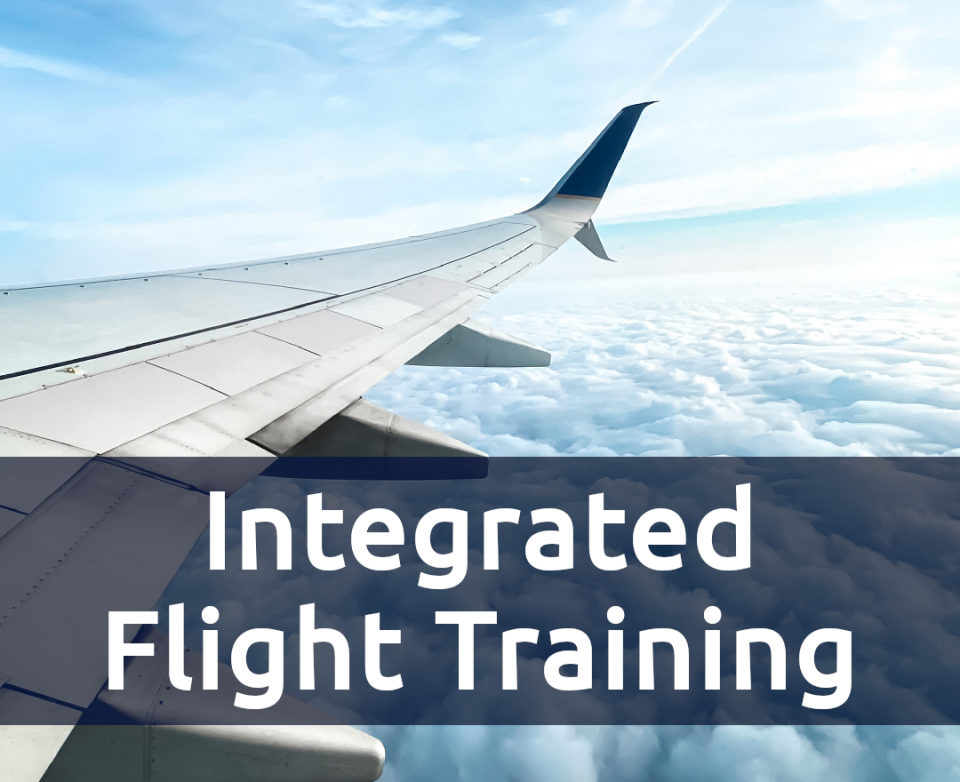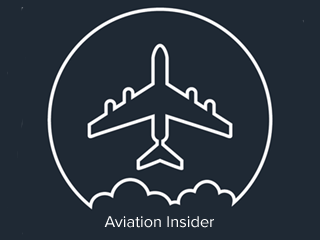Our full list of Integrated providers can be found here
About the course
An Integrated training route aims to take a student from little or no experience of flying (ab-initio) to being a fully qualified commercial pilot, with the aim of operating for an Airline. This pathway of training is undertaken on a full-time schedule and is conducted residentially, at an Approved Training Organisation (ATO) that is authorised by the national civil aviation authority. The time period usually takes between 18-24 months and can vary depending on weather conditions, scheduling frequency and student competence. By the end of the course, the student will have attained a ‘Frozen’ ATPL (fATPL) which will then allow them to apply for airline pilot roles.
Course Requirements
- The applicant must be at least 18 years of age at the time of enrolling onto an Integrated course.
- A valid CAA / EASA Class 1 Medical Certificate must be held.
- A suitable level of English language proficiency. Usually a minimum of level 4 on the ICAO Level 1-6 scale.
- Completed secondary education to a satisfactory standard. (UK GCSEs equivalent of 5 A-C including Maths and English. For international students, please enquire with your prospective Integrated ATOs, details of whom can be found in our database here)
- A right-minded, focused and dedicated attitude towards training and studying.
Course structure and Completion
An Integrated course is usually done in ‘Phases’, which will cover; Basic Flying, ATPL Theory (groundschool), Hour Building, Multi-Engine Piston Rating, CPL (Commercial Pilot Licence), IR (Instrument Rating), Multi Crew Course (to teach transition from single pilot operations to multi pilot operations). Please note that some Integrated courses may offer the APS upgrade from MCC and the A-UPRT (Advanced Upset Prevention Recovery Training) add on, so please inquire with your prospective ATOs.
The phases are done one after the other in succession, which will also include internal progress tests and external skills tests to assess your competence and knowledge and award you with the relevant licence and ratings. ATPL ground school usually takes around 8-9 months, at the end of which you should come out with 14 exam passes. The whole course will be structured and scheduled for you by the ATO and published on your training roster. You will also gain the required hours for qualification for a Multi-Engine CPL/IR & MCC as mandated by the civil aviation authorities. Don't become too fixated or confused on the structure of the hours as this will be explained to you in detail by your ATO and will be fully managed and scheduled into your whole syllabus in the form of lessons etc. You are required to acquire 195 total hours (which includes progress tests), of which 55 can be instrument ground time (simulator). All of these hours must be entered and logged into your logbook and signed off. After the CPL and IR training stages, you will sit external Skills Tests in an aircraft for your Multi-Engine Rating CPL and IR, which usually last around 2 hours each.
The detailed breakdown of hours is as follows:
- 750 hours theoretical knowledge training (ATPL Theory) in a classroom plus 25 hours MCC.
- 95 hours dual-instruction, of which 55 can be instrument ground time.
- 70 hours Solo as PIC (Pilot In Command) as VFR (Visual) and Instrument flying, of which up to 20 hours can be done as Instrument SPIC (Student PIC with an instructur sat next to you in the aircraft)
- Cross-Country flying which is 50 hours as PIC, including one VFR Cross-Country Qualification (QXC) flight of at least 300nm (540km), which must also include full stop landings at two aerodromes which are different from the departure aerodrome.
- 5 hours of Night Flying, which comprises 3 hours of dual instruction and 1 hour of Cross-Country Navigation and 5 solo take-offs and full stop landings.
- Instrument time of 115 hours, that includes at least 20 hours as SPIC, at least 15 hours for MCC, which may be done in an approved simulator, at least 50 hours of instrument flight instruction, of which up to 25 hours may be instrument ground time in an FNPT I certified simulator , and 40 hours may be in an FNPT II, FTD 2 or FFS, of which up to 10 hours may be in an FNPT I.
- 5 of the total flying hours must be in an aircraft that is certified for at least 4 people, has a variable pitch propeller and retractable landing gears.
If you hold a licence at present or have flying experience, you may be able to apply credit towards the flying and theoretical knowledge training for the issue of a licence or rating. These include: Licences/ratings from another ICAO member state, UK Military hours and CPLs from a different category of aircraft. Please enquire with your shortlisted training providers as this will be done on a case by case basis.
Our full list of Integrated providers can be found here
How to choose a Training Provder
For information and advice on how to choose an ATO, please refer to our How To Choose A Flight Training Provider information guide to best help you in your decision making process. You can then search through our extensive database to create a shortlist of training providers that best suit you in order to narrow down your options and choose the one that's right for you.
Equipment
- Headset, VFR Chart, IFR Jeppesen plates, Charts for appropriate airfields, Stationary including chart-pens, chart-ruler, protractor and compass, CRP-5, DP-1 ruler, flight bag, kneeboard, calculator.
- Hi-Visibility jacket, fuel drainer, small torch.
- ATPL Theory study material, Question bank subscription, Ipad.
If undertaking an Integrated course, most of the equipment and study material required for the duration of your will usually be provided to you by your training provider as part of the course fees. You may have to return some or all of the equipment at the end of the course, but this will be made clear to you prior to enrollment. Items such as laptops, ipads and shoes will need to be supplied by yourself prior to starting.
Tips, Advice and Common Mistakes
Please refer to our individual advice pages for tips, advice and common mistakes made on the various stages of training, as required. Don't worry about the pre-requisites or hours stated on those pages as they are geared towards Modular training courses, however the tips and advice section is relevant to both training routes. The PPL, Night Rating and Hour Building advice pages can be used for the basic flying phase of Integrated training. Also, the Multi-Engine Piston Rating is usually combined with the CPL phase on the integrated pathway.
General tips for this course are; effective time-management, focus and a good work ethic because it is a full time and non-stop course. If you are unsure of anything or find certain aspects challenging, then seek advice from your instructors who should be able to help you in the best way possible to find solutions. Most importantly, ENJOY IT! Some of the best memories and experiences of your flying career will be from your flight training and so make the most of it, learn all you can and keep that end goal in sight while enjoying the journey to it.
Next Steps
- A-UPRT, if not included in your course
- APC (Airline Pilot Standards Multi Crew Cooperation), if not included in your course.
- Airlines/Companies.
Our full list of Integrated providers can be found here



